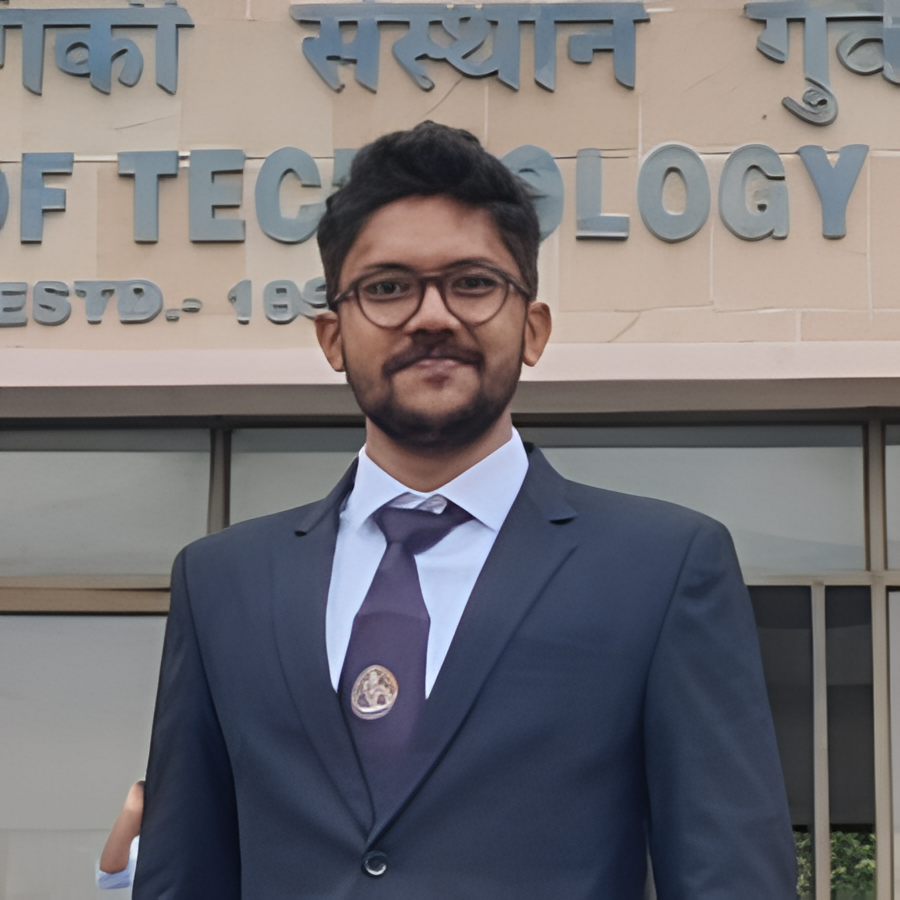How Poor Code Ownership Models Silently Sabotage Enterprise Software Delivery
In large-scale software development, few decisions have more far-reaching consequences than how you structure code ownership. Yet most organizations treat it as a purely technical consideration, when it's fundamentally a social problem that demands social solutions supported by technology.
The implications are staggering: code ownership determines how swiftly projects deliver, how many engineers you need, whether programs succeed or languish in perpetual delay, and countless other outcomes that SDLC designers must grapple with daily. The tragedy is that most failures stem not from lack of resources or talent, but from ownership models that work exactly opposite to their design intent.
The Three Models: A False Choice
Hard Ownership: The Bottleneck Factory
Hard ownership means a specific group exclusively controls a codebase—only they can modify it. Need a change? Queue up and wait your turn.
In enterprises with hundreds of distinct codebases, this creates a coordination nightmare. Consider a typical scenario: your program requires modifications across 20 different codebases owned by 20 different teams. Each team has its own queue, priorities, and capacity constraints. Your program manager must get work scheduled with all 20 teams simultaneously.
The mathematics of failure are predictable. Software changes must be validated by consuming teams, and integration testing requires everyone working in concert. Synchronizing 20 teams is nearly impossible when some teams face heavy workload queues while others have fewer developers relative to demand. Inevitably, one team becomes the long pole that delays everything.
The result? Beyond the top one or two priority projects, most initiatives fail to reach production—not from insufficient resources or talent, but because the ownership structure creates a network of workflows designed to fail. Management rarely understands that hard ownership makes cadence, synchronization, and resource allocation across integration testing and production rollout fundamentally unworkable.
Collaborative Ownership: Chaos at Scale
Collaborative ownership emerged as the antithesis to hard ownership: everyone owns everything, anyone can modify any code.
It works beautifully for small, cohesive teams working on newer codebases where everyone knows each other and collaborates naturally. But it fails catastrophically at enterprise scale.
When junior, senior, and principal engineers can all modify any part of the codebase, small changes can trigger serious production incidents. A handful of undisciplined developers can degrade the entire codebase. Managers often reward speed over code quality, creating perverse incentives. The on-call burden becomes crushing as developers face constant 2 AM wake-ups to address incidents caused by changes they didn't make and didn't review.
The problems multiply: unclear accountability, inconsistent standards, technical debt accumulation, and ultimately, production instability that damages customer trust.
Weak Ownership: The Promising Middle Ground
Weak ownership occupies the middle ground. Code teams serve as gatekeepers but anyone can propose changes—typically through pull requests in the modern development workflow. The open source world thrives on this model: any developer can submit a pull request, and committed contributors review and accept quality contributions.
Most enterprises using GitHub, Bitbucket, or similar tools claim to use weak ownership. In theory, it solves the coordination problems of hard ownership while maintaining quality controls absent in collaborative ownership.
But here's the uncomfortable truth: weak ownership in most enterprises is hard ownership in disguise—and it may be worse.
Why Weak Ownership Becomes Hard Ownership in Disguise
Hard ownership, for all its flaws, is at least transparent. Program managers can plan around its limitations. But when organizations proclaim weak ownership while operating under hard ownership socially, the dysfunction deepens because no one acknowledges the real social constraints that create barriers to contribute code to others repository converting technically weak ownership into socially hard ownership. Here are few of many barriers.
The Code Discovery Crisis
Mini Case Study: We recently worked with an enterprise searching for the source code of "DigitalGoodNodeWeb" Their internal GitHub showed the repo in three different organizations with 25 forks (forking being actively promoted in their culture). No clear official owner existed. After consulting original contributors and examining commit histories, we traced it to what appeared to be a developer's fork—only to discover that information was also incorrect.
Time to locate official source code: Five days.
This isn’t an isolated incident. When we demonstrated that it took five days to locate the source code for a service, the CTO and staff explained it away — “that’s an inactive repo,” they said. Developers added, “the reorg caused confusion.” These sound reasonable but are systemically wrong explanations. Even inactive repositories need occasional changes for minor features or security patches. Reorgs don’t inherently cause ownership loss — the real problem is the absence of a system to manage ownership through reorgs. The difficulty in locating an inactive repo simply exposed the larger flaws and limitations in code discovery systems within the SDLC.
Even with active repos, outsiders often cannot find the source code without reaching out to people, sending mass emails, or posting on Slack. When code isn’t easily discoverable, it raises the cost of contribution for newcomers and hardens informal ownership boundaries. Saying “it’s an inactive repo, so it’s not a problem” is precisely backward — because even for active repos, the social barriers remain high when the process should take less than a minute.
Mini Case Study: In discussion with a client using GitHub poly-repo as their source code management system, we discovered developers could only see and modify codebases they owned—a shocking finding given management's constant emphasis on collaboration and teamwork. The organization wanted to work together at the people level but remained siloed at the code level, where real software collaboration must occur. Research revealed this stemmed from a security incident a year prior: a developer had modified code outside their scope, causing security vulnerabilities. The CISO's Root Cause Analysis concluded the problem was violating the "need-to-know" principle, leading security to restrict code access to only what developers were authorized to modify. What's critical here is how technically weak ownership supported by GitHub as a tool was transformed into socially hard ownership—GitHub's flexible access controls became rigid organizational barriers enforced by policy. While the CISO's logic was impeccable and the RCA was formally correct, the solution was systemically wrong, causing project failures, increased costs, reduced collaboration, and shifted power from engineers to program managers who became the only ones able to coordinate cross-team work. This case exemplifies how engineers and technologists can be logically correct yet systematically wrong, applying analytical thinking that creates harmful feedback loops in complex systems. As systems thinking teaches us, the road to hell is paved with good intentions. The client is now undoing these silos, implementing counter-intuitive solutions we provided that prevent similar incidents better than code isolation ever could, without sacrificing the collaboration essential for software development.
The Branching Labyrinth
Once you locate the source code, figuring out the correct branch for submission becomes an ordeal of its own. Repositories often contain hundreds of branches, and developers outside the core team—unfamiliar with the workflow—can’t easily tell which branch to use or how code moves from one branch to another.
This lack of a clear, simple branching strategy creates social barriers within the organization, turning what should be weak ownership into strong ownership. The same issue is rampant in the open-source world, where branching chaos is visible to everyone—but there, it’s tolerable because no single entity bears the cost. In the enterprise world, however, the company pays a heavy price for it: the confusion transforms weak ownership into socially reinforced strong ownership, raising the transaction cost for any outsider trying to contribute code or advance the project.
The CI/CD System Barrier
Fork a repository to start development, and you immediately lose default CI/CD access. Building and testing become a nightmare—friction begins before you’ve written a single line of code.
It’s 2025, and most large-scale software organizations still struggle with effective CI/CD—not due to a lack of tools or technology, but because they fail to recognize it as a social problem, not just a technical one. In many enterprises, simply getting your code to build, test, and pass all checks before submitting a pull request is a challenge in itself. And if you manage to clear that hurdle, you enter the next phase—Pull Request Purgatory.
The Pull Request Purgatory
Submit your pull request, and then... silence. Or worse, an endless series of criteria and obstacles that make acceptance impossible.
Why? The host team doesn't want external code because production incidents wake them at 2 AM. They must own and support code they didn't write. And here's the systemic irony: this same host team faces identical barriers when submitting code to other teams' repositories.
Each team technologically creates the same barriers for every other team. The problem isn't isolated—it's systemic.
We could enumerate 20 additional collaboration barriers: integration testing requirements, performance testing gates, end-to-end testing coordination. These make it effectively impossible for guest teams to contribute, transforming the pull request-based GitHub system designed for weak ownership into hard ownership—but unacknowledged.
The Executive Disconnect
Executives continue asking people to collaborate, contribute to each other's repositories, create solutions teams that coordinate across codebases, and launch innersource programs. None of these initiatives address the systemic issues preventing innersourcing. Instead, they blame or attempt to motivate people to overcome structural problems—an approach that might succeed briefly through heroic effort but remains completely unsustainable.
The Contribution.md Fantasy
Case Study: One company hired an open source expert to transform their culture, making it more like open source communities where any developer can contribute to any codebase. Excitement was high—everyone recognized the problem and wanted it solved.
The solution? Speeches. Inspirational talks about collaboration. And the tactical implementation: every repository owner would create a contribution.md file documenting their full SDLC process.
The result? A classic failure.
Consider the stakes: if weak ownership could be genuinely enabled in a company with 2,000 developers (annual development cost: $400 million), the company would immediately realize a $40 million cost reduction and create an additional $100 million in value through reduced delay costs.
Yet the contribution.md solution displayed that neither the open source expert, executives, nor developers were thinking systemically. As one frustrated developer noted from the podium: "Developer X goes home in the evening and contributes to open source projects—they're one of the biggest contributors. But inside the company, X neither accepts code from others nor contributes to other repositories. The problem cannot be Developer X. It's the systems that need fixing, not Developer X. And X writes code in open source because they can't write the code they want to write in the enterprise."
The Domain Lock Trap: Fancy name, but poor solution
Case Study: Another company operated with collaborative code ownership in a monorepo where anyone could modify any of 100+ components. Poor code quality and monolithic architecture triggered production incident after production incident. Developers faced constant 2 AM wake-ups to resolve incidents and fix data corruption.
Every domain team complained. Collectively, they implemented a solution: domain locks. No one could contribute code to a domain unless they were a member or received explicit permission—seemingly a move toward weak ownership.
But the build system only ran in Jenkins, not on local machines. Developers could check out code but couldn't commit even to feature branches because domain locks would block them. They couldn't build locally, couldn't modify code, couldn't show demos on their development environment—all without domain lock permission.
The permission process required answering extensive questions and clearing hurdles, because host teams never wanted their code modified by others, knowing it would create support burdens.
The impact: A company that delivered 20 large projects annually dropped to 4 buggy projects per year. No one connected the dots back to domain locks.
When we ran a transformation program, we helped stakeholders understand the issue. Domain locks were redesigned to apply only to production merges, allowing developers full freedom in earlier development stages. Thinking AI Will Fix Your SDLC Is a Trap for Most Organizations
Systemic issues in SDLC exist in almost every organization, yet most people keep kicking the can down the road. Why? Because they fail to recognize that the problem isn’t just technical—it’s fundamentally social. Over the years, organizations have moved from bare metal to VMs, to cloud, digital transformation, and now AI, hoping each step will magically solve their SDLC challenges.
Here’s the truth: if your SDLC suffers from systemic techno-social problems, AI—though an amazing technology that can double individual productivity and increase systemic productivity tenfold—can only deliver those gains in systems where humans can actually work effectively. It’s like what SystemsWay highlighted: AI-driven cars work great in cities like San Francisco, Austin, or Los Angeles, but fail on streets in India because the surrounding system can’t support them.
The lesson is simple but critical: SDLC is a system, and understanding it as a system is more important than ever. Companies with strong SDLC practices—where ownership is clear and processes function reliably—will see productivity multiply. Companies with weak SDLC and poor ownership will see little benefit, no matter how much AI they deploy.
The Real Test: Do You Have True Weak Ownership?
If you believe your company operates under weak ownership, apply these tests:
Social and technological burden test: Is the burden of developing code identical for host codebase developers and guest codebase developers? If not, you don't have weak ownership.
Special privilege test: Does the host team possess special privileges in their codebase beyond code approval? If yes, you don't have weak ownership.
Blind review test: Do code reviewers look at the contributor's name when evaluating pull requests? In true weak ownership, code quality matters—not who submitted it. If reviewers consider identity, you don't have weak ownership.
These criteria, along with others around code discovery, CI/CD, and builds on forks, determine whether you genuinely operate under weak ownership or whether you have hard ownership slowing all your projects and causing most to fail—stuck in queues across different teams where synchronization proves nearly impossible.
Remember this fundamental rule: the longer a project takes to reach production, the lower its probability of ever reaching production.
The Path Forward: Making Weak Ownership Successful
Weak ownership is a fantastic model—but only when it works socially. When designed well, it can become a powerful competitive advantage, enabling high throughput, shorter cycle times, and drastically reducing the rate of failed projects moving to production.However, making weak ownership work requires systemic and systematic design—of code discovery, branching strategy, code promotion, CI/CD, and much more. It demands far more than procuring tools or implementing technical solutions. It requires a comprehensive techno-social systems design.It starts with recognizing that weak ownership is a social problem—one that technology alone cannot solve. Addressing it requires Systems Thinking, and learning that is the beginning.The worst consequence of failing to understand the systemic nature of these problems is blaming people—for not reviewing pull requests, not approving contributions, or not behaving “correctly”—when, in truth, it’s not a people problem.Organizations that successfully implement weak ownership understand they are designing social systems supported by technology, not implementing technical systems hoping to fix social ones. This isn’t about motivation, culture change, or better documentation—it’s about redesigning the techno-social systems that shape behavior. Solving for weak ownership is easy provided people who woul be driving this transformation realize that they can be logically correct but systemically wrong and learning systems thinking is the first step.
Reach out to SDLC.Works
- Discuss code ownership challenges specific or SDLC in general for your enterprise
- Request an assessment of your current ownership model and its hidden costs
- Design a transformation plan tailored to your SDLC
- Develop systems thinking capabilities in your leadership team—the foundational skill required for successful SDLC systems transformation, fixing not only ownership but SDLC as whole.
SDLC That Works (sdlc.works) can support your SDLC transformation—but we don’t do the transformation for you. You lead it, under our guidance. Transformations are faster and more successful when driven by the very people who understand the systems they operate.
We believe every true transformation begins with transforming how people think and we help you start there through our Systems Thinking course, enriched with SDLC-oriented case studies.
To begin your journey, reach out to our education partner, SystemsWay School for Leadership and Management, and start the conversation at [email protected].
























